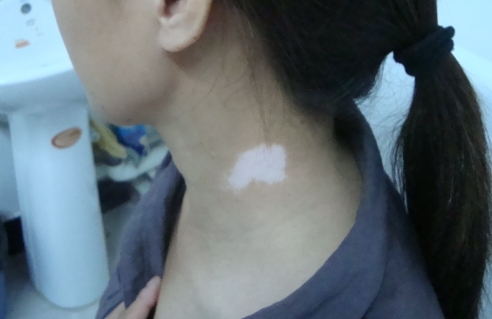
Winter should be a stable period of vitiligo,why does it relapse again ?
Clinically, vitiligo often presents a rule of seasonal incidence, which basically follows the rule "grow in spring, spread in summer, be relieved in autumn ,be stable in winter ".Compared with the high incidence of spring and summer, the incidence of winter is relatively low, and because of this patients will relax their vigilance.

But actually, in winter there are many patients still relapsing vitiligo.
External environment stimulation leads to recurrence
Affected by environmental changes
In winter, the weather is cold, people reduce outdoor activities, and the body's metabolism slows down and as well as blood circulation, which reduces the activity and number of immune cells and weakens the ability to resist pathogens.
For example,the human body is more likely to catch a cold in winter, which will stimulate the body to produce a stress response. It may induce the recurrence of vitiligo. In addition, the short sunshine time in winter makes vitamin D synthesized by skin reduce . It will also affect the regulatory function of the immune system, leading to immune dysfunction and increasing the risk of vitiligo recurrence.
In winder skin gets stimulus
In winter the climate is dry, the skin water loses fast. if you do not pay attention to moisturizing, the skin barrier function is easily damaged. And the dried skin , aggravated sensitive problem will also cause inflammation, leading to the recurrence of vitiligo. For example, in the north ,during winter, the temperature difference between indoor and outdoor is huge, and the drying problem will be more obvious.
Further more, wearing too many clothes, thick clothes, rough clothes will also rub skin. Frostbite caused by cold weather can also induce isomorphic reactions, leading to the recurrence of vitiligo.
Bad eating habit
In winter, people tend to prefer high-calorie food, and may ignore the intake of food which is rich in vitamins, minerals and trace elements, resulting in nutritional imbalances of body and also affecting the synthesis of melanophores.
Discontinuation of treatment results in the recurrence of vitiligo
The treatment of vitiligo is an continuous process, and even though the condition appears to be in remission during the winter, the function of melanophore may not fully restore. Interruption of treatment is also an important reason for the recurrence of vitiligo.
During the recovery period,the damaged melanophores can’t repair continuously, then they are easy to be damaged again, leading to the recurrence of the disease. In addition, the body's metabolism slows down in winter, and the function of immune system is relatively weak. After the interruption of treatment, the body can not continuously get the support from drugs or treatment, and the resistance to diseases is further reduced. Like after some patients stop phototherapy in winter, the internal micro-environment of their body is unbalanced, and vitiligo is easy to relapse.